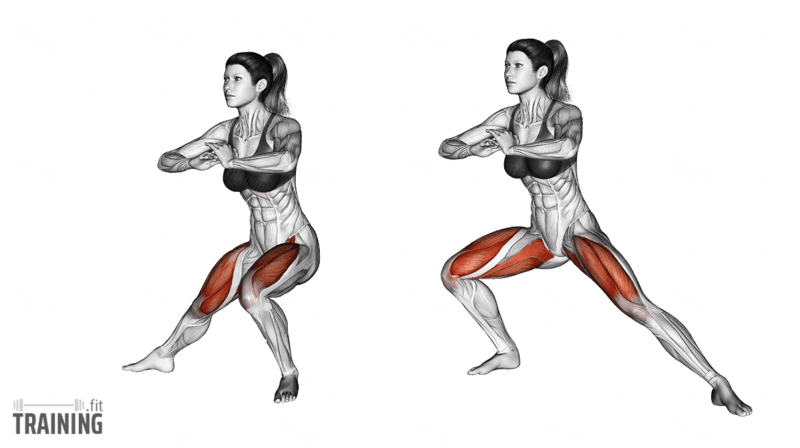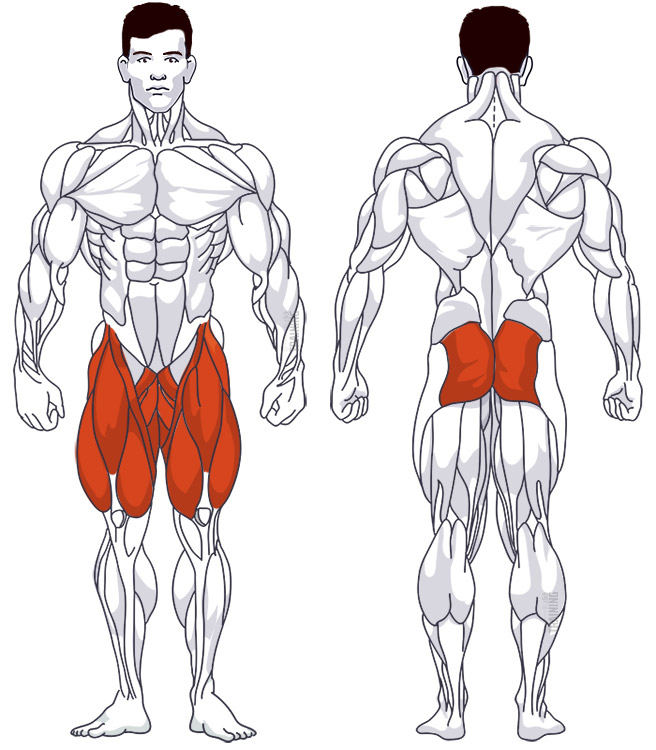Side Lunge
Isolation exercise, Body weightOverview

Main muscles
- Thigh: Long adductor muscle
(Musculus adductor longus) - Thigh: Quadriceps
(Musculus quadriceps femoris) - Buttocks: Large gluteus maximus
(Musculus gluteus maximus)
Training plans
Side Lunge is a suitable substitute for similar exercises in inner thigh training or as a supplement to various training plans.
Side Lunge: Basics and alternatives

Involved main muscle groups:
Side Lunge
The Side Lunge is an excellent way to target your inner thighs without any equipment. You can easily do it at home using just your bodyweight. Here’s how to do it: Step to the side, bend your knee, lower your upper body over the bent knee, and stand back up.
If you’re at the gym, you can also work your inner thighs with the Adduction machine or cable pull. Another option for a home workout is side climbers, which can be done with or without dumbbells.
Correct execution
You can vary the exercise by adjusting the size of the side lunge and how low you go. When starting out, it’s best to keep the movements small so you can learn the proper form. After a few training sessions, you can increase the size of your step and lower your body more. Practicing in front of a mirror can be especially helpful for beginners.
You can alternate between sets or reps. This means you can either do one set with one leg and switch to the other for the next set, or you can do one rep with one leg and switch to the other for the next rep. There’s no right or wrong way, choose the version that feels best for your muscles.
For more advanced exercisers, you can use weights. This works best with a barbell that you hold on your neck like you would with squats. The exercise becomes more challenging due to the increased workload and because it’s harder to maintain balance. Only try this option once you’ve mastered the Side Lunge without weights and have the necessary strength.
Video tutorial
Step-by-step instructions
Stand upright with your feet hip-width apart.
Hold your hands together in front of your chest. Both feet should be facing forward. This is your starting position.
Take a step to the side with one leg and bend your knee as you place your foot on the ground. Keep your other leg straight. Your butt should be extended, and your chest should be pushed forward. Both feet should face forward.
Hold the position for a moment and push your upper body back to the starting position by straightening your bent leg.
Common mistakes
Make sure that the toes of both feet face forward and that you don’t twist your knees. This will ensure that you don’t put excessive stress on your joints.
It’s also important to perform the exercise with stable form. As mentioned, it’s crucial to first learn the proper form securely and not take too big steps or go too low. This will ensure better muscle activation and minimize the risk of injury.